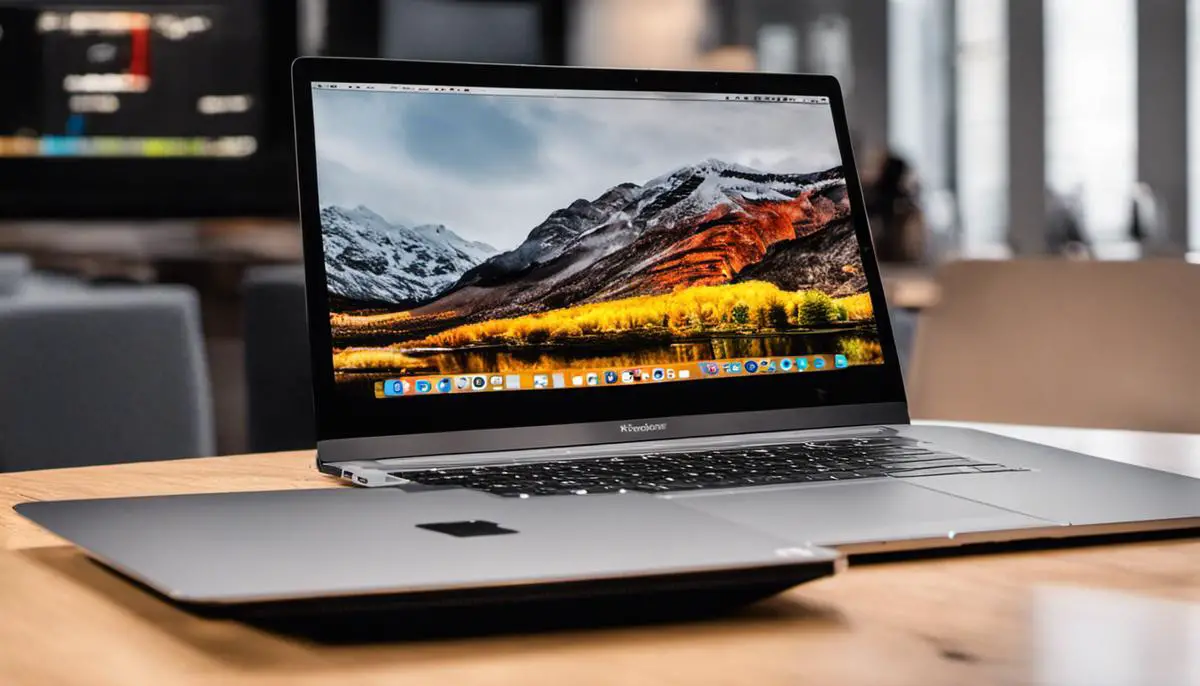Let’s cut to the chase: you’re here because you need a high-performing laptop that fits your specific needs, whether you’re a student, a professional, or a creative.
You’re considering two top contenders in the market: the MacBook Pro and the Microsoft Surface Book.
Both are excellent choices, but they have distinct features and advantages that may make one a better fit for you over the other.
In the following sections, I’ll break down the key differences in design, performance, and software, based on my over two decades of experience in the tech industry. This will help you make an informed decision that aligns with your unique requirements and preferences.
- Exploring Design and the Build Quality
- Size and Weight: A User’s Perspective on MacBook Pro vs Surface Book
- Choosing Your Color: Aesthetics and Personal Preferences
- Considering the Materials: MacBook Pro and Surface Book’s Build Quality From a User’s Lens
- Ergonomics and Real-World Usage: MacBook Pro vs Surface Book
- Armed with USB-C Ports and Thunderbolt
- Connectivity Options: MacBook Pro vs Surface Book
- Comparing Unique Aspects: MacBook Pro vs. Surface Book
- An Analysis of Display and Audio Quality
- Putting the Display Quality to Test: MacBook Pro vs. Surface Book
- Screen Size: MacBook Pro vs. Surface Book
- Evaluating Speaker Quality: MacBook Pro vs. Surface Book
- Crafting Your Multimedia Experience: Comparing the MacBook Pro & the Surface Book
- Recapping Your Multimedia Experience: MacBook Pro vs. Surface Book
- Performance and Hardware
- Operating Systems and Software
- Pricing and Value for Money
- Real-life Examples and Case Studies
- Your Personalized Guide to Choosing Between MacBook Pro and Surface Book
- My Expert Recommendation and Conclusion
As technology continues to advance at breakneck speeds, choosing the right laptop can be a daunting task. In the quest for the perfect device, many enthusiasts find themselves torn between the powerful and sleek MacBook Pro and the innovative and versatile Microsoft Surface Book.
Update: While the Microsoft Surface Book has been discontinued, the information in this article remains valuable in your search for a high-performing laptop.
Exploring Design and the Build Quality
Let’s start with the outside and work our way in. The MacBook Pro is well-known for its premium look and feel, with its sleek aluminum body and minimalist design. It’s no surprise that many consider it to be one of the most aesthetically pleasing laptops on the market.
On the other hand, the Surface Book has a more unique design with its detachable screen, making it a versatile 2-in-1 device. Its magnesium body also offers a lightweight and durable build.
Size and Weight: A User’s Perspective on MacBook Pro vs Surface Book
When choosing a laptop, one crucial aspect to consider is its size and weight. This factor significantly influences the portability and ease of use, particularly for those who travel frequently or move around a lot.
The MacBook Pro offers two options: a 13.3-inch model and a larger 16-inch one. The smaller option, which weighs a mere 2.8 pounds, is perfect for those on the go, easily fitting into most bags. Its larger counterpart weighs in at 4.3 pounds, offering a more substantial screen size for those who prioritize a more extensive viewing experience.
Here’s a quick snapshot:
- 13.3-inch MacBook Pro – Weight: 2.8 pounds
- 16-inch MacBook Pro – Weight: 4.3 pounds
In comparison, the Microsoft Surface Book is slightly heavier. The base model comes with a 13.5-inch screen and weighs 3.38 pounds, while the upgraded version boasts a larger 15-inch screen and weighs 4.2 pounds. Though a bit bulkier, the Surface Book’s innovative design and detachable screen may outweigh its additional heft for some users who value flexibility and versatility.
Surface Book options:
- 13.5-inch Microsoft Surface Book – Weight: 3.38 pounds
- 15-inch Microsoft Surface Book – Weight: 4.2 pounds
In the end, the decision between the lighter MacBook Pro and the slightly heftier Surface Book will depend on your personal needs and lifestyle. Both of them are sufficiently comfortable to be carried in a backpack.
Related: The Power Button on MacBook Pro: Functions and Troubleshooting Tips
Choosing Your Color: Aesthetics and Personal Preferences
When it comes to choosing your laptop’s color, it’s all about personal preference and the statement you want to make. The color of your laptop is an extension of your personality and style.
Apple offers the MacBook Pro in two classic color options. The timeless Silver is a popular choice for its clean, professional look. For those who prefer a more modern twist, the Space Gray variant provides a sleek, sophisticated edge.
On the other hand, Microsoft gives you a little more room to make a statement with the Surface Book. You can opt for the conventional Platinum or Black for a traditional, professional feel. If you’re feeling a bit more adventurous, the Surface Book also comes in Cobalt Blue and Burgundy, offering a unique visual appeal and helping your device stand out from the crowd.
Whether you’re drawn to the minimalist chic of the MacBook Pro or the vibrant versatility of the Surface Book, choose a color that resonates with you and fits your style.
Also Read: Unleashing Your Microsoft Surface Pro 9 or Surface Laptop 5
Considering the Materials: MacBook Pro and Surface Book’s Build Quality From a User’s Lens
When choosing between a MacBook Pro and a Surface Book, the construction materials of these devices can significantly impact your user experience. Understanding the build quality from a user’s perspective can guide you toward the choice that best suits your needs.
MacBook Pro’s Material Construction
Apple’s MacBook Pro boasts an all-aluminum unibody architecture. The unibody design means there are fewer parts, resulting in a seamless, high-quality feel.
This robust construction not only adds to the device’s longevity but also provides a premium, sleek appearance.
Surface Book’s Material Construction
In contrast, Microsoft’s Surface Book displays a unique blend of metal and plastic. This composite construction gives the Surface Book a distinctive, complex look.
Its most notable feature from a user’s perspective is the dynamic fulcrum hinge. This hinge provides a perfect blend of rigidity and flexibility, enabling the device to operate as a laptop and a tablet with ease.
Ergonomics and Real-World Usage: MacBook Pro vs Surface Book
Both MacBook Pro and Surface Book have made considerable strides in ergonomics, each targeting different user needs and real-world applications.
Let’s compare their features to understand how they can enhance your user experience in practical scenarios.
MacBook Pro: Simplified User Interface for Professional Use
The MacBook Pro offers features tailored for professionals who value a streamlined, intuitive user interface. Here are these features in list form:
- Generous trackpad: The MacBook Pro’s trackpad is large and responsive, facilitating easy navigation.
- Backlit keyboard: The keyboard has a backlight, making it easier to use in dark settings or during late-night work sessions.
- Scissor-switch mechanism: The keyboard employs a scissor-switch mechanism, providing a responsive and satisfying typing experience. This feature is especially beneficial for writers, programmers, and other professionals who spend significant time typing.
These ergonomic features make the MacBook Pro a popular choice among professionals, providing a blend of performance, aesthetics, and user-friendly design.
Also Read: You’re Using Your Macbook Wrong: Optimizing User Experience
Surface Book: Versatile Design for Creative Professionals
The Surface Book, on the other hand, is a versatile machine that provides more than just traditional laptop functionality.
- Its detachable keyboard enables an easy transition between laptop and tablet modes, opening up a new realm of usability.
Imagine being a graphic designer who can sketch directly onto the screen using the included Surface Pen. This feature has been lauded by artists, designers, and creative professionals who appreciate the freedom to draw and annotate directly on their devices.
In summary, both laptops offer excellent ergonomic design. The MacBook Pro shines in its simplicity and seamless user experience, ideal for professionals seeking an efficient, straightforward workstation. The Surface Book, with its flexibility and pen input, is a great fit for creative professionals who value multipurpose devices capable of adapting to various work scenarios.
Armed with USB-C Ports and Thunderbolt
Both laptops feature USB-C ports, but the MacBook Pro edges out the Surface Book on this front. The MacBook Pro features Thunderbolt 3 ports, which allow high-speed data transfer, charging for most devices, and connection to an external display, all through the same cable. The Surface Book, however, sticks to USB-C without Thunderbolt 3 support, limiting its versatility slightly.
Connectivity Options: MacBook Pro vs Surface Book
When it comes to connectivity options, both the MacBook Pro and the Surface Book are equipped with USB-C ports. However, the two laptops offer different user experiences based on the capabilities of these ports.
Note: Some new MacBook Pro laptops come with Thunderbolt 4.
MacBook Pro: Thunderbolt 3 Ports
The MacBook Pro takes the lead in this category with its inclusion of Thunderbolt 3 ports. These advanced ports offer several user benefits:
- High-speed data transfer: Thunderbolt 3 allows data transfer at rates up to 40Gbps, which is around 8 times faster than USB 3.0. This means faster file transfers and less time spent waiting for downloads or uploads.
- Universal charging: Thunderbolt 3 supports universal charging for most devices, eliminating the need for multiple chargers. This can simplify your workspace and lessen the load when traveling.
- Display connectivity: The Thunderbolt 3 port can connect to an external display, allowing for a dual-screen setup or larger viewing area. This feature is beneficial for multitaskers, graphic designers, video editors, or anyone who benefits from the expanded visual workspace.
- Peripheral connectivity: The port allows for the connection of a wide range of peripherals, such as external hard drives, printers, and other essentials for a well-rounded workspace.
Surface Book: USB-C Ports
Conversely, the Surface Book utilizes USB-C ports without Thunderbolt 3 support. Despite lacking the advanced capabilities of Thunderbolt, the USB-C ports still offer some significant user benefits:
- Data transfer: USB-C supports data transfer at rates up to 5Gbps, which, while slower than Thunderbolt 3, is still fast enough for most everyday tasks.
- Charging: USB-C can charge your Surface Book and some external devices, contributing to a clutter-free workspace.
- Video output: The port supports the output to external displays, facilitating expanded visual workspace or presentations.
In conclusion, while both laptops provide solid connectivity options, the MacBook Pro’s Thunderbolt 3 ports offer greater versatility and functionality for the end-user. Meanwhile, the Surface Book’s USB-C ports are more than capable of handling everyday tasks and satisfying the needs of most users.
Comparing Unique Aspects: MacBook Pro vs. Surface Book
While both MacBook Pro and Surface Book are compelling options to consider, they each come with a distinct set of features that cater to different user needs. Here, we’ll delve deeper into these unique aspects to help you make a more informed decision.
MacBook Pro: Synonymous with Seamless User Experience
- Elegant Simplicity: The MacBook Pro is a testament to Apple’s philosophy of simplicity. With a sleek, uncluttered design and intuitive user interface, it’s the go-to option for professionals desiring a hassle-free, efficient workstation.
- Superior Performance: Powered by Apple’s cutting-edge M1 chip, the MacBook Pro offers robust performance, handling demanding tasks like video editing or software development with ease.
- Seamless Ecosystem: The MacBook Pro shines when integrated with other Apple devices, offering a seamless transition from your laptop to your iPhone or iPad.
Surface Book: A Canvas for Creativity
- Versatile Functionality: The Surface Book is a 2-in-1 device, effortlessly switching between laptop and tablet modes. This feature is a boon for creative professionals who value the ability to draw and annotate directly on their devices.
- Integrated Stylus: The included Surface Pen allows for precise input, making it an ideal tool for artists, designers, and those who frequently present or annotate documents.
- Adaptable to Various Work Scenarios: With its ability to function both as a laptop and a tablet, the Surface Book is versatile enough to adapt to a multitude of work environments, making it an excellent choice for those with dynamic work roles.
By understanding these unique aspects, you can choose a device that best aligns with your specific needs and working style.
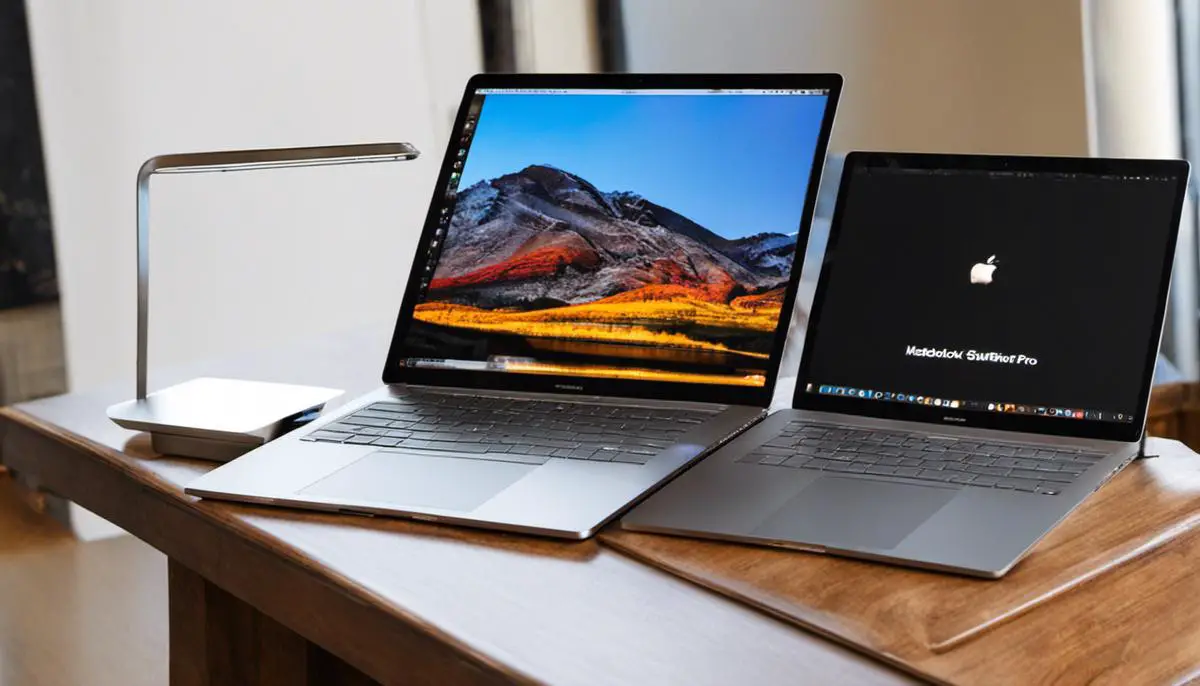
An Analysis of Display and Audio Quality
The display and sound are undoubtedly among the primary concerns for most laptop users, as they greatly influence the overall user experience.
Putting the Display Quality to Test: MacBook Pro vs. Surface Book
When it comes to display quality, both MacBook Pro and Surface Book shine in their unique ways. Here’s a simplified comparison to help you understand their offerings:
MacBook Pro’s Retina Display
- Resolution: The 16-inch model offers a resolution of 3072 x 1920, while the 13-inch version provides a resolution of 2560 x 1600.
- Detail: The viewing experience is exceptionally detailed, boasting over 4 million or 5 million pixels, respectively.
- Color Accuracy: The MacBook Pro outperforms with its P3 wide color gamut, offering 25% more colors than the standard RGB color spectrum.
- Brightness: The brightness can go up to 500 nits, ensuring clear visibility even in bright daylight.
Surface Book’s PixelSense Display
- Resolution: The 13.5-inch model stands at a resolution of 3000 x 2000 and the 15-inch variant at 3240 x 2160.
- Detail: The high-resolution displays make for crisp and bright imagery.
- Color Accuracy: Each Surface Book device is individually calibrated from the factory, ensuring superb color accuracy.
- Brightness: The maximum brightness level is near 400 nits, providing impressive visibility in varied light settings.
Screen Size: MacBook Pro vs. Surface Book
Screen size is often a determinant of the user’s choice of laptop.
The MacBook Pro is available in two screen sizes—13 inch and 16 inch, meeting a variety of user needs. Whether you prefer a compact size for portability or a larger screen for a more immersive experience, the MacBook Pro has you covered.
In comparison, the Surface Book comes in two screen sizes as well—13.5 inches and 15 inches. While these may slightly differ from the MacBook Pro’s offerings, they provide versatility for users. The 13.5-inch is great for on-the-go productivity, while the 15-inch offers a more expansive workspace.
Evaluating Speaker Quality: MacBook Pro vs. Surface Book
Let’s delve deeper into the audio experience provided by the MacBook Pro and Surface Book. Understanding these specifications can significantly enhance your multimedia and communication experiences.
MacBook Pro’s High-Fidelity Audio Experience
The MacBook Pro offers a sophisticated audio setup designed to deliver a rich and immersive sound experience:
- High-Fidelity Six-Speaker System: This setup ensures a wide stereo sound, providing a more engaging listening experience whether you’re enjoying music, watching videos, or streaming content.
- Force-Canceling Woofers: These specialized components are engineered to deliver deep bass for a fuller, richer sound profile.
- Enhanced Volume: The speaker system on the MacBook Pro is capable of providing more volume, allowing for clearer and louder audio.
- Improved Mic Setup: The new microphone array captures 40% less hiss than previous iterations, which means your voice is picked up with greater clarity and less noise interference—ideal for podcasters, video conferencing, or recording voiceovers.
Surface Book’s Dolby Atmos Experience
The Surface Book, while may not entirely match the MacBook Pro’s audio richness, offers a commendable audio experience:
- Front-Facing Stereo Speakers: The speakers are positioned to directly project sound towards you, enhancing the overall audio experience.
- Dolby Atmos: This technology provides a more immersive, cinema-like sound that can make multimedia content more enjoyable.
- Overall Quality: While the Surface Book’s speakers deliver good sound quality, they might not match the depth and richness of the MacBook Pro’s six-speaker system. However, they are more than capable of providing a satisfying audio experience for everyday use.
By considering these detailed points on speaker quality, you can choose a laptop that aligns best with your audio preferences and needs.
Crafting Your Multimedia Experience: Comparing the MacBook Pro & the Surface Book
Delving into multimedia prowess, the MacBook Pro and Surface Book from Apple and Microsoft respectively, are both cutting-edge powerhouses.
They shine on the multimedia front, boasting high-resolution display panels that deliver impeccable color accuracy. However, adding a feather to its cap, the MacBook Pro pulls slightly ahead due to its slightly brighter display and extended color plane.
While you may covet either of these laptops for their remarkable HD screens, remember, size matters depending on your preference for mobility versus an impactful viewing experience.
On the auditory frontier, the MacBook Pro pulls rank yet again courtesy of its sophisticated six-speaker system, delivering sound that is both lucid and loud. In contrast, the Surface Book also doesn’t dash hopes, with its quality stereo speakers, but they don’t quite live up to the gush of sound waves from the MacBook Pro.
So, if you are snagged between the Apple MacBook Pro and Microsoft Surface Book, know that both laptops serve premium multimedia experiences with their unique set of features and strengths. The choice, therefore, boils down to what suits your personal and professional needs best.
Recapping Your Multimedia Experience: MacBook Pro vs. Surface Book
Both the MacBook Pro and the Surface Book are high-performing devices, each boasting impressive multimedia capabilities that are tailored to meet diverse user needs. Here’s a recap to help you differentiate and decide.
Display Capacities
When it comes to displays, both laptops are top-tier. They boast high-resolution screens that render vibrant and accurate colors, enhancing every user’s visual experience.
- The MacBook Pro, however, takes a slight lead with its brighter display and wider color gamut.
While the Surface Book delivers admirably in this domain, if you prioritize superior display brightness and color palette, the MacBook Pro might be your best bet.
Screen Size
The screen size is a crucial factor to consider, especially if you’re looking for a balance between portability and an immersive viewing experience.
- The MacBook Pro is offered in 13″ and 16″ models, while the Surface Book has 13.5″ and 15″ versions.
Thus, your choice should align with your preference for compactness or a larger display area.
Audio Quality
As for the audio experience, the MacBook Pro stands out with its high-fidelity six-speaker system providing crystal-clear, loud sound.
The Surface Book, on the other hand, offers quality stereo speakers with Dolby Atmos, delivering a satisfactory audio experience for daily use.
- If you are an audiophile or your work demands high-quality sound, the MacBook Pro may edge out the Surface Book in this aspect.
Your decision should ultimately hinge on what features matter most to you, whether it’s display quality, screen size, audio prowess, or a balance of all.

Performance and Hardware
Let’s dive into the performance and hardware aspects of these laptops to give you a comprehensive comparison.
Performance Showdown: Processor & Graphics Comparison
Let’s now turn our attention to the core of these formidable laptops – their processors. The MacBook Pro presents an array of options, including the Intel Core i5 or i7, and the revolutionary Apple M1 chip.
The Intel processors deliver impressive speed and performance for resource-intensive applications like video and photo editing software. However, the M1 chip, Apple’s creation, takes this a step further with its superior power efficiency and computational speed.
- Processor Capabilities:
- The MacBook Pro is equipped with an Intel Core i5 or i7 processor, or M1 Chip, making it adept at running intensive applications.
- In comparison, the Surface Book also comes with an Intel Core i5 or i7, ensuring a competent performance for demanding tasks.
- Graphics Comparison:
- MacBook Pro models come with dual GPUs—an integrated Intel and a dedicated AMD Radeon Pro graphics card—delivering superior graphics management.
- Surface Book offers two GPU options: an integrated Intel HD Graphics 520 and a dedicated NVIDIA GeForce GPU for heavy-duty graphics tasks.
Performance: RAM and Storage
- RAM:
- The MacBook Pro offers 16GB of RAM.
- The Surface Book offers 8GB to 16GB of RAM, depending on the model.
- Storage:
- MacBook Pro offers SSD capacities of 256GB, 512GB, or 1TB.
- The Surface Book provides SSDs ranging from 128GB to 1TB.
Benchmark Results
- General Performance Benchmarks:
- Both laptops perform well in benchmark tests, scoring high in tests like the Geekbench 3 test and the Handbrake test.
- Graphics Performance Benchmarks:
- The MacBook Pro and the Surface Book perform well in graphic-intensive benchmarks, showcasing their prowess in the Cinebench R15 OpenGL test and the Unigine Heaven 4.0 test.
Battery Life
- Claimed Battery Life:
- Apple claims up to 10 hours for the MacBook Pro.
- Microsoft claims up to 12 hours for the Surface Book.
- Real-World Battery Life:
- The MacBook Pro typically lasts about 9 hours with continuous web browsing.
- The Surface Book can last up to 10 hours.
Everyday Performance
- Overall Operation:
- Both the MacBook Pro and the Surface Book provide smooth operation for daily tasks like web browsing, video playback, light gaming, and document editing.
- Heat Management:
- The MacBook Pro tends to heat up with heavy usage, with fans kicking in for cooling.
- The Surface Book manages heat better and also produces fan noise at high-performance levels.
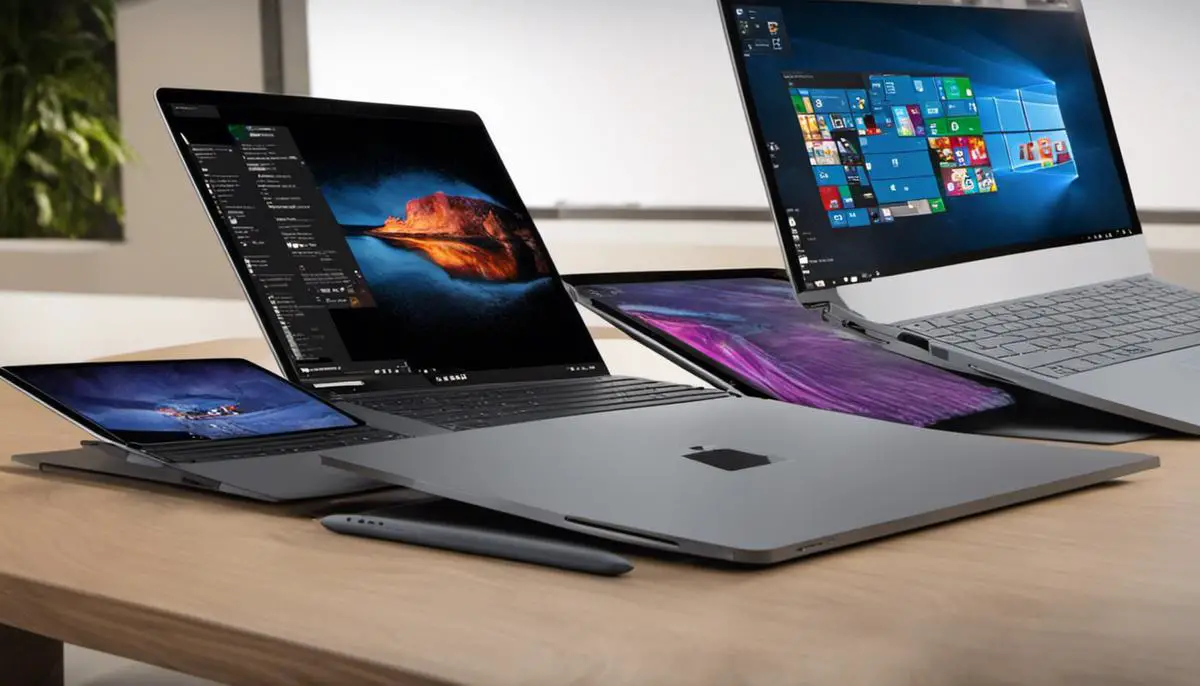
Operating Systems and Software
The OS, the interface we either love or hate, is a critical aspect to consider when it comes to performance. Here’s how these laptops fare in terms of their operating systems and pre-installed software.
Operating Systems Face-off: macOS vs Windows
In the ring of operating systems, the MacBook Pro stands firmly with macOS, while Microsoft Surface Book champions Windows. Here’s how the competition shapes up:
Apple macOS:
- User experience: Known for its intuitive design, macOS offers a user-friendly interface and seamless synchronization with other Apple products like iPhones, iPads, and Apple Watches.
- Exclusive Applications: macOS is the home to a suite of exclusive apps, including iPhoto, iMovie, GarageBand, and Time Machine, enriching the functionality right from the get-go.
- Security: macOS has robust security features, such as encrypted storage, secure boot, anti-phishing, and privacy controls for app permissions, ensuring users can trust their MacBook Pro with their data.
Microsoft Windows:
- Flexibility: Windows, one of the most widely-used operating systems worldwide, offers a wealth of features and customization options, making it adaptable to a wide range of software, tools, and games available through the Windows Store and third-party resources.
- Versatility: Windows is adaptable to diverse workflows, from creative endeavors and data analysis to complex computations and gaming, making the Surface Book a versatile choice for a broad spectrum of users.
Pre-installed Software: MacBook Pro and Surface Book
One of the reasons Apple’s MacBook Pro garners such a strong following is due to the range of useful pre-installed software that the device brings to its users.
Software like iMovie for video editing, GarageBand for music creation, and the suite of productivity apps such as Pages, Numbers, and Keynote contribute greatly to enhancing productivity right after unpacking the device.
The Microsoft Surface Book also comes with an array of pre-installed software, such as the Microsoft Office Suite that includes Word, Excel, PowerPoint, and Outlook.
These globally recognized productivity apps are widely used in corporate, educational, and personal settings. Surface Book users also receive a complimentary one-month trial of Microsoft 365, providing you with cloud storage and access to updated Office Suite tools.
Laptops’ Software Environment
The MacBook Pro’s software environment is strictly curated by Apple, ensuring that all software elements communicate harmoniously with one another while maintaining the design aesthetics that Apple users appreciate.
This harmonious design accompanies both the operating system and the pre-installed app and translates into a seamless, fluid, and enjoyable user experience.
On the other hand, the Surface Book caters to users wishing for more control over their software environment.
It provides much more freedom when it comes to customization, allowing users to tailor the platform to their specific needs. Microsoft’s software environment is open to a vast sea of third-party applications and offers an important flexibility that benefits many tech-savvy users.
Also Read: Surface Keyboard Not Working: Understanding the Issue and Troubleshooting Tips
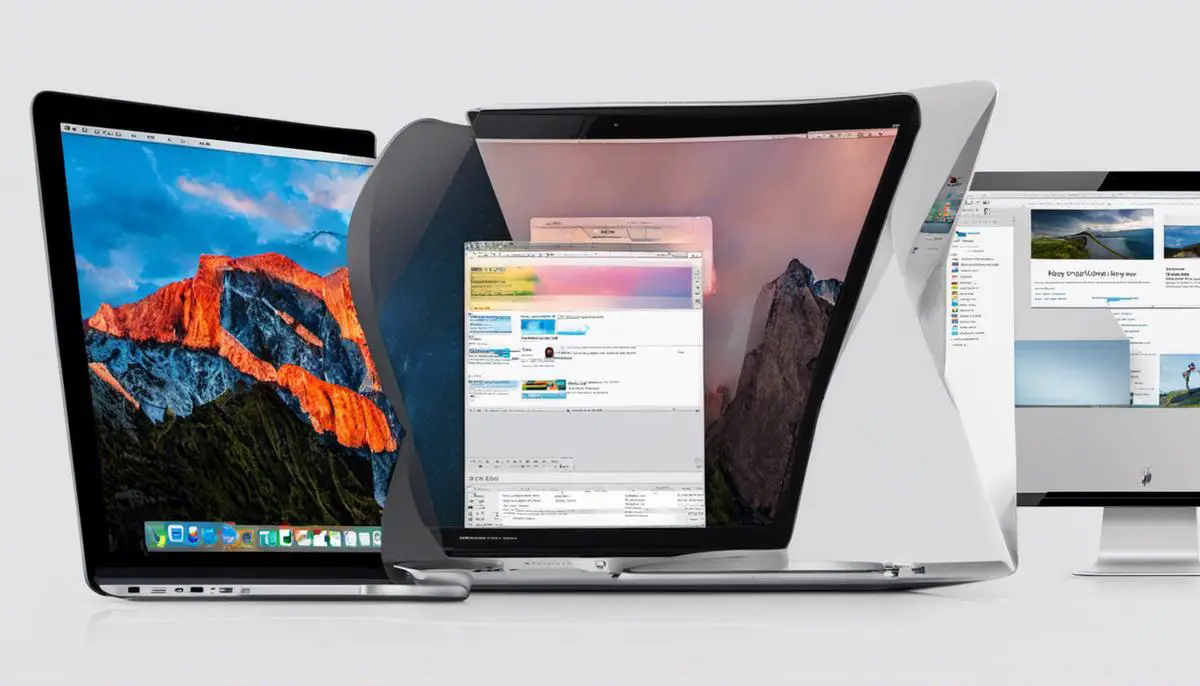
Pricing and Value for Money
Comparison of MacBook Pro and Surface Book Pricing
When it comes to cost, both the MacBook Pro and Microsoft Surface Book present a wide range due to the diversity in model specifications. The price differences can be attributed to varying factors such as storage capacity, processing power, and graphic capabilities, among others.
Price Range of Apple MacBook Pro
Apple’s MacBook Pro typically falls within the following price brackets:
- Its base model starts at around $1,300.
- The mid-range versions, including upgrades to storage and processor, hover around the $1,700 mark.
- The high-end models equipped with the fastest processors and maximum storage can exceed $2,000.
Price Range of Microsoft Surface Book
Microsoft’s Surface Book pricing varies considerably, often depending on the model and its specifications:
- The introductory models start at a slightly lower cost, around $1,000.
- Mid-range models with more storage and improved processing power can be found in the $1,500 range.
- Premium models with top-tier specifications and the most potent graphics capabilities can surpass $2,000.
Assessing Value for Money
When assessing the value for money, it’s important to consider not just the laptop’s cost, but the features and capabilities you’re getting in return.
Whether it’s the seamless user experience offered by macOS, or the versatility and software customization options provided by Windows, both the MacBook Pro and Surface Book present compelling cases for their respective price points.
Configuration Options
The Apple MacBook Pro is offered in 13.3-inch and 16-inch models. Both come with Apple’s M1 chip or Intel processors, and solid-state drive (SSD) storage options ranging from 256GB to 2TB for the smaller model and up to 8TB for the larger.
The Surface Book comes in 13.5-inch and 15-inch models, equipped with 10th-generation Intel Core processors and storage options from 256GB to 2TB.
Considerations for Warranty
Both Apple and Microsoft offer standard warranties for their respective products, which typically cover repairs and service for a predetermined period, but can be extended with additional purchase.
- Apple provides a one-year limited warranty and up to 90 days of complimentary technical support that can be extended up to three years with the AppleCare+ for Mac.
- Microsoft offers a similar standard one-year limited hardware warranty that can be extended with the Microsoft Complete Extended Service Plan.
Bundled Software
Both laptops come with their respective operating systems and a set of built-in applications.
- MacBook Pro comes with macOS and apps like Photos, iMovie, GarageBand, Pages, Numbers, Keynote, Siri, Safari, Mail, FaceTime, Messages, Maps, News, Stocks, Home, Voice Memos, Notes, Calendar, Contacts, Reminders, Photo Booth, Preview, Music, Podcasts, TV, Books, App Store, Time Machine.
- Surface Book, being a Windows product, comes with Windows 10, Microsoft Office 365 (30-day trial), a Windows Hello face authentication camera, and more.
Additional Expenses
Laptops, regardless of the brand, often involve additional expenses in the form of accessories. For the MacBook Pro, users frequently purchase items like Magic Mouse, Magic Keyboard, external storage devices, stands, and adapters for USB, HDMI, VGA, Thunderbolt, and more.
Surface Book users, on the other hand, have been known to buy the Surface Pen, Surface Dial, Surface Dock, keyboard covers, and protective sleeves, among others.
These accessory costs can add up, affecting the overall price of owning the device.
All these factors should be calculated into the final price of owning either the Apple MacBook Pro or the Microsoft Surface Book.
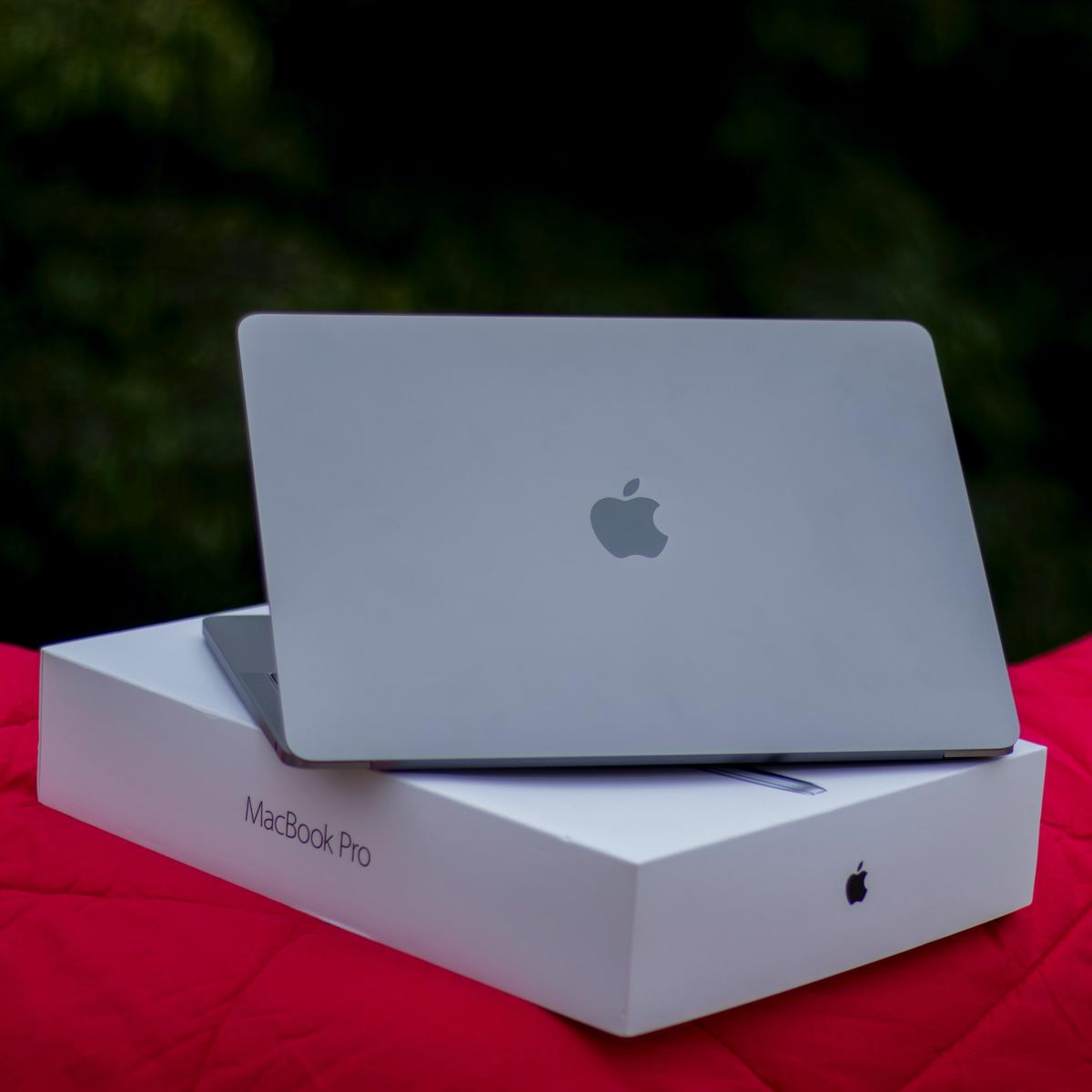
Photo by applefanboy on Unsplash
Real-life Examples and Case Studies
Use Case: Professionals
Professionals who value the robustness and security of the macOS environment often lean towards the MacBook Pro.
For instance, developers appreciate its UNIX-based system for ease in handling and writing code. The MacBook’s M1 chip offers significant improvements in speed and battery life, making it a powerful tool for professionals working on data-intensive tasks.
Use Case: Students
Students, particularly those on a budget, may find the Surface Book a more attractive choice. Its versatility, lightweight design, and touchscreen capability make it an excellent tool for note-taking, research, and multimedia learning.
Plus, with the familiarity of the Microsoft Office Suite, students can easily work on assignments and collaborate on group projects.
Use Case: Creatives
Creatives—such as graphic designers, photographers, and videographers—often opt for the MacBook Pro for its superior display quality and the seamless integration of creative tools like Adobe Creative Cloud.
However, the Surface Book, with its detachable screen that doubles as a tablet, offers a unique advantage, particularly for digital artists who can use the Surface Pen for direct, on-screen drawing and design work.
Your Personalized Guide to Choosing Between MacBook Pro and Surface Book
When it comes to choosing your ideal laptop between the MacBook Pro and Surface Book, it’s crucial to have a systematic approach. Here are some user-focused steps to guide you:
- Assess Your Needs: Every user has unique needs based on their professional or personal use. Are you a student, a professional, or a creative? Do you prioritize performance, display quality, or the operating system? Do you need a lightweight laptop or a robust workstation? Pinning down your specific needs will significantly guide your choice.
- Evaluate Pros and Cons: Every laptop model has its strengths and weaknesses. Research and understand the pros and cons of both the MacBook Pro and the Surface Book. Make a list of these points, and see which positives outweigh the negatives based on your specific needs.
- Consider the Long-Term Value: Look beyond the upfront cost. Consider the potential long-term value each laptop could offer. This could include aspects like durability, warranty, customer service, and even potential resale value should you decide to upgrade in the future.
- Test Before You Buy: If possible, try out both laptops in a store. Explore their interfaces, and test the keyboard’s feel, the screen’s look, and the overall user experience. This can give you a practical sense of what it might be like to own and use each one.
- Think About the Extras: Consider the cost of additional accessories and software you might need. For instance, you might want a Surface Pen with your Surface Book or a Magic Mouse for your MacBook Pro. These extras can influence the total cost of ownership.
- Make Your Decision: Lastly, after considering all the factors, make your decision. Remember, the best laptop for you is the one that fits your needs most closely and offers you the most value.
By the way, the operating system that you are already familiar with or perhaps already using on your Apple phone will influence your laptop purchase decision. In simpler terms, if you are already committed to one ecosystem, it might be more convenient to stick with the same brand for your laptop as well.
My Expert Recommendation and Conclusion
Naturally, this is a subjective matter, and individual experiences may differ, but let’s dive in. I have consolidated all the information mentioned earlier in this article and presented it here for a concise and accessible read.
Design: MacBook Pro takes the crown
The first thing you notice when comparing these two laptops is their design. The MacBook Pro boasts a sleek and elegant aluminum body, while the Surface Book has a unique detachable screen that can function as a tablet.
While both designs have their merits, the MacBook Pro’s slim profile and robust build give it an edge over the Surface Book. Not to mention, it’s also lighter and more compact, making it easier to carry around.
Performance: The Microsoft Surface Book shines
When it comes to performance, the Microsoft Surface Book takes the spotlight with its impressive specs. With up to 16GB of RAM and a powerful Intel Core processor, this laptop is designed for heavy multitasking and demanding tasks.
On the other hand, the MacBook Pro offers a more modest 8GB of RAM and slightly weaker processors. However, it still delivers exceptional performance for everyday use and even some graphic-intensive tasks.
Software: It’s macOS vs Windows
One of the biggest differences between these two laptops is their software. The MacBook Pro runs on Apple’s macOS, while the Surface Book uses Microsoft’s Windows operating system.
If you’re already comfortable with either ecosystem, this may not be a significant factor for you. However, if you’re new to both, it’s essential to consider which one better suits your needs and preferences.
Tip: Remember that while macOS is known for its user-friendly interface and optimized software, Windows has a broader range of compatible software and games.
Making the Choice: What to Keep in Mind
As you can see, both the MacBook Pro and the Surface Book have their strengths and weaknesses. So how do you decide which one is right for you?
First, consider your primary use for a laptop. Do you need it for work, school, or creative projects? This will help determine which features and specs are most important to you.
Next, think about your budget. While the MacBook Pro is generally pricier, the Surface Book offers a more affordable option for those on a budget.
Finally, take advantage of in-store demos or online reviews to get a feel for the laptops and see how they perform in real-life scenarios.
Remember: there is no one-size-fits-all solution, and the best laptop is the one that suits you best.
- Upgrading SSD Storage in the ThinkPad X9-15 Gen 1 Aura Edition
- How Quantum Computing Could Impact Everyday Laptops
- What Is The Difference Between Lenovo’s Pens? (with Part Numbers)
- Legion 5 Laptop Upgrade Guide: Game Like a Pro
- How to Replace Your Laptop Battery: A Step-by-Step Guide
- IdeaPad Gaming 3 Upgrade (Full Specs)
- Shut Down a Lenovo Laptop: Quick and Easy
- Lenovo LOQ 15IRX9 RAM and SSD Upgrade

